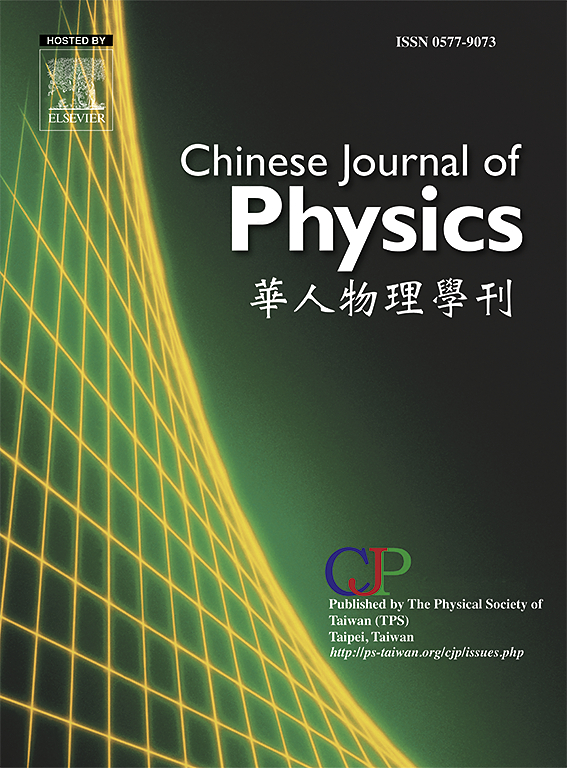Prediction of axial ratio using machine learning (ML) for a dual-band circularly polarized dielectric resonator antenna (DRA)
IF 4.6
2区 物理与天体物理
Q1 PHYSICS, MULTIDISCIPLINARY
引用次数: 0
Abstract
In this paper, an asymmetrical dielectric resonator antenna (DRA) is designed to achieve circular polarization at dual frequencies within the C-band (4–8 GHz) and X-band (8–12 GHz) ranges. A regression-based machine learning (ML) technique is employed to predict the antenna’s axial ratio. The DRA structure consists of three rectangular ceramic blocks with a uniform permittivity of 9.8 and is excited by a microstrip feedline. Two dielectric resonators (DRs) of different heights are placed on the same plane, while the third DR is positioned atop the first two with a 60° rotation, enabling a wide 3 dB axial ratio (AR) bandwidth across both bands. The antenna operates from 5.2 GHz to 12.0 GHz, achieving a 10 dB impedance bandwidth of 79%. The AR bandwidth (≤ 3 dB) spans two bands: 6.0–8.7 GHz (lower band) and 9.9–11.8 GHz (upper band). The antenna maintains a gain of over 4 dBi throughout the bandwidth. Additionally, the antenna is analyzed in an array configuration, and beam steering at 30° is demonstrated through simulation. A dataset comprising various antenna dimensions and their corresponding axial ratio values is generated using parametric sweep analysis. A supervised regression-based ML approach is then employed to predict the axial ratio at two circularly polarized frequencies: 7.2 GHz and 10.5 GHz. Several regression algorithms are tested, and the Extra Trees Regression model achieves the lowest prediction error and highest accuracy.

双频圆极化介质谐振器天线(DRA)轴向比的机器学习预测
本文设计了一种非对称介质谐振器天线(DRA),在c波段(4 - 8ghz)和x波段(8 - 12ghz)范围内实现双频圆极化。采用基于回归的机器学习(ML)技术预测天线的轴向比。DRA结构由三个均匀介电常数为9.8的矩形陶瓷块组成,由微带馈线激励。两个不同高度的介电谐振器(DR)放置在同一平面上,而第三个DR位于前两个的顶部,具有60°旋转,从而在两个频带上实现宽3db轴向比(AR)带宽。天线工作在5.2 GHz到12.0 GHz,实现了79%的10 dB阻抗带宽。AR带宽(≤3db)跨越6.0 ~ 8.7 GHz(下带)和9.9 ~ 11.8 GHz(上带)两个频段。天线在整个带宽范围内保持超过4 dBi的增益。此外,对天线进行了阵列配置分析,并通过仿真验证了30°波束转向。通过参数扫描分析,生成了包含各种天线尺寸及其相应轴比值的数据集。然后采用基于监督回归的ML方法来预测两个圆极化频率:7.2 GHz和10.5 GHz的轴比。对几种回归算法进行了测试,Extra Trees回归模型的预测误差最小,预测精度最高。
本文章由计算机程序翻译,如有差异,请以英文原文为准。
求助全文
约1分钟内获得全文
求助全文
来源期刊

Chinese Journal of Physics
物理-物理:综合
CiteScore
8.50
自引率
10.00%
发文量
361
审稿时长
44 days
期刊介绍:
The Chinese Journal of Physics publishes important advances in various branches in physics, including statistical and biophysical physics, condensed matter physics, atomic/molecular physics, optics, particle physics and nuclear physics.
The editors welcome manuscripts on:
-General Physics: Statistical and Quantum Mechanics, etc.-
Gravitation and Astrophysics-
Elementary Particles and Fields-
Nuclear Physics-
Atomic, Molecular, and Optical Physics-
Quantum Information and Quantum Computation-
Fluid Dynamics, Nonlinear Dynamics, Chaos, and Complex Networks-
Plasma and Beam Physics-
Condensed Matter: Structure, etc.-
Condensed Matter: Electronic Properties, etc.-
Polymer, Soft Matter, Biological, and Interdisciplinary Physics.
CJP publishes regular research papers, feature articles and review papers.
 求助内容:
求助内容: 应助结果提醒方式:
应助结果提醒方式:


